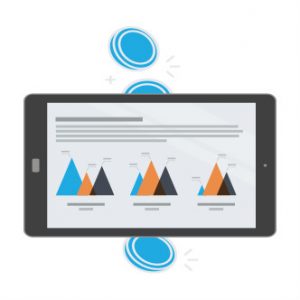Globax news
Blog
How Mastercard Uses AI Strategically: A Case Study

Every day, huge quantities of digital transactions take place as users move money, pay bills, deposit checks and trade stocks online. The need to ramp up cybersecurity and fraud detection efforts is now a necessity for any bank or financial institution, and AI plays a key role in improving the security of online finance. SoFi makes https://www.personal-accounting.org/corporate-finance-career-path-roles-salaries/ online banking services available to consumers and small businesses. Its offerings include checking and savings accounts, small business loans, student loan refinancing and credit score insights. For example, SoFi members looking for help can take advantage of 24/7 support from the company’s intelligent virtual assistant.
Beware, finance bros: AI is coming for banking before any other kinds of jobs, Citigroup warns
Scienaptic AI provides several financial-based services, including a credit underwriting platform that gives banks and credit institutions more transparency while cutting losses. Its underwriting platform uses non-tradeline data, adaptive AI models and records that are refreshed every three months to create predictive intelligence for credit decisions. On a retail level, advanced random forests accurately detect credit card fraud based on customer financial behaviour and spending pattern, and then flag it for investigation (Kumar et al. 2019). Similarly, Coats and Fant (1993) build a NN alert model for distressed firms that outperforms linear techniques.
Get the latest updates fromMIT Technology Review
The following companies are just a few examples of how artificial intelligence in finance is helping banking institutions improve predictions and manage risk. Founded in 1993, The Motley Fool is a financial services company dedicated to making the world smarter, happier, and richer. The Motley Fool reaches millions of people every month through our premium investing solutions, free guidance and market analysis on Fool.com, top-rated podcasts, and non-profit The Motley Fool Foundation. Indeed, AI could add $170 billion to the profit pool for the banking sector globally by 2028. Mastercard’s strategic application of AI serves as a powerful example for other organizations looking to harness the potential of this technology.
Investment and spending
- Accordingly, governments and investors lost their interest and AI fell short of financial support and funding in 1974–1980 and again in 1987–1993.
- AI-powered computers can analyze large, complex data sets faster and more efficiently than humans.
- Hence, future contributions may advance our understanding of the implications of these latest developments for finance and other important fields, such as education and health.
- Over the past two decades, artificial intelligence (AI) has experienced rapid development and is being used in a wide range of sectors and activities, including finance.
- Moreover, companies adopting AI technologies sometimes report better performance (Van Roy et al. 2020).
- Open access funding provided by Università Politecnica delle Marche within the CRUI-CARE Agreement.
Our platform uses advanced AI/ML technology to analyze, interpret, and visualize financial data. We turn complex data into easy-to-understand charts and narratives, providing you with actionable insights and forecasts. David Walker joined Westpac Group in August 2019 as group chief technology officer. He started his technology career in 1987 as an engineer, coding systems for various Australia-based companies. After a decade of honing his software engineering craft, he founded a consultancy company that specializes in data science. The technology, which enables computers to be taught to analyze data, identify patterns, and predict outcomes, has evolved from aspirational to mainstream, opening a potential knowledge gap among some finance leaders.
Related Articles
Backpropagation, Recurrent, and Feed-Forward NNs are considered basic neural nets and are commonly employed. Advanced NNs, such as Higher-Order Neural network (HONN) and Long Short-Term Memory Networks (LSTM), are more performing than their standard version but also much more complicated to apply. These methods are usually compared to autoregressive models and regressions, such as ARMA, ARIMA, and GARCH. Finally, we observe that almost all the sampled papers are quantitative, whilst only three of them are qualitative and four of them consist in literature reviews.
AI Companies Managing Financial Risk
Artificial intelligence is a field of computer science that creates intelligent machines capable of performing cognitive tasks, such as reasoning, learning, taking action and speech recognition, which have been traditionally regarded as human tasks (Frankenfield 2021). AI comprises a broad and rapidly growing number of technologies and fields, and is often regarded as a general-purpose technology, namely a technology that becomes pervasive, improves over time and generates complementary innovation (Bresnahan and Trajtenberg 1995). As a result, it is not surprising that there is no consensus on the way AI is defined (Van Roy et al. 2020). Sentiment analysis builds on text-based data from social networks and news to identify investor sentiment and use it as a predictor of asset prices.
Proactive governance can drive responsible, ethical and transparent AI usage, which is critical as financial institutions handle vast amounts of sensitive data. While investors initially sent the stock price down following the news that Meta plans to spend billions more than originally planned building out AI data centers, the stock has since recovered. “Traditional AI adoption in financial services [is] widespread, shallow, and inconsequential,” Shameek Kundu, chief strategy officer and head of financial services at AI observability platform TruEra, wrote in the report. Mastercard continues to explore new AI technologies and their potential applications.
These methods may be restrictive as sometimes there is not a clear distinction between the two categories (Jones et al. 2017). Therefore, prospective research might focus on multiple outcome domains and extend the research area to other contexts, such as bond default prediction, corporate mergers, reconstructions, takeovers, and credit rating changes (Jones et al. 2017). Corporate credit ratings and social media data should be included as independent predictors in credit risk forecasts to evaluate their impact on the accuracy of risk-predicting models (Uddin et al. 2020). Moreover, it is worth evaluating the benefits of a combined human–machine approach, where analysts contribute to variables’ selection alongside data mining techniques (Jones et al. 2017). Forthcoming studies should also address black box and over-fitting biases (Sariev and Germano 2020), as well as provide solutions for the manipulation and transformation of missing input data relevant to the model (Jones et al. 2017).

Founded in Australia more than 200 years ago, Westpac has become a go-to bank for consumers and businesses by offering a wide range of services. McKinsey’s Keerthi Iyengar spoke to David Walker, group chief technology officer at Westpac, to learn how the organization has evolved over the years to provide better, more secure services to its customers. She’s “available” as an agent of innovation–she’s artificial intelligence (AI) in action. More importantly, CFOs are ready to explore AI’s potential–“accelerated methods for costing inventory in cost accounting business digitization,” including AI, was one of the top strategic shifts CFOs said their companies were making in response to a turbulent economic environment brought on by the pandemic. Already, 67% of respondents in our State of AI survey said they are currently using machine learning, and almost 97% plan to use it in the near future. Among executives whose companies have adopted AI, many envision it transforming not only businesses, but also entire industries in the next five years.
The following companies are just a few examples of how AI-infused technology is helping financial institutions make better trades. Overall, the integration of AI in finance is creating a new era of data-driven decision-making, efficiency, security and customer experience in the financial sector. Get stock recommendations, portfolio guidance, and more from The Motley Fool’s premium services. Meta’s also using generative AI to help creators interact with fans, to help businesses connect with customers, and for its internal development team.
It’s equipped with generative AI to enhance productivity by aiding users in drafting documents, revising content and conducting research. The company has more than a dozen offices around the globe serving customers in industries like banking, insurance and higher education. One of the primary ways Mastercard utilizes AI is through its decision management platform, which serves as the AI brain running within its network. This platform enables the company to make real-time, complex decisions on transactions, significantly enhancing fraud detection and prevention.
For a preview, look to the finance industry which has been incorporating data and algorithms for a long time, and which is always a canary in the coal mine for new technology. The experience of finance suggests that AI will transform some industries (sometimes very quickly) and that it will especially benefit larger players. The advent of ERP systems allowed companies https://www.simple-accounting.org/ to centralize and standardize their financial functions. Early automation was rule-based, meaning as a transaction occurred or input was entered, it could be subject to a series of rules for handling. While these systems automate financial processes, they require significant manual maintenance, are slow to update, and lack the agility of today’s AI-based automation.











Recent Comments